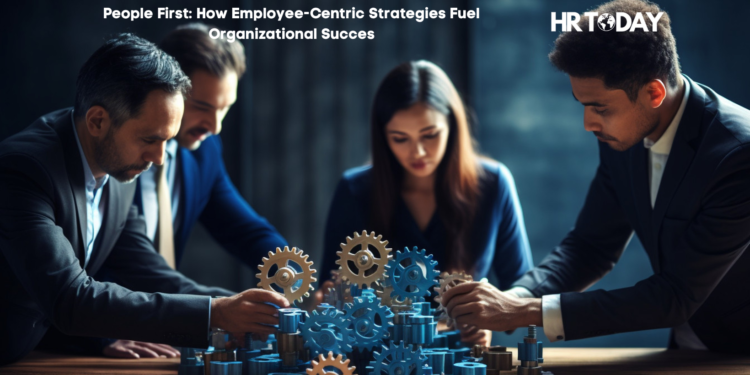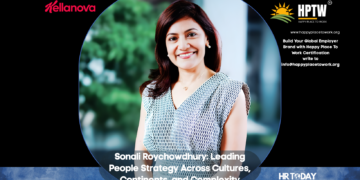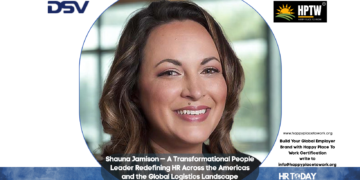Can a four-day work week be a game-changer for the organization’s productivity? Or could unlimited time off be the reason for reducing burnout and boosting satisfaction among employees? Are these just mere ideas or could it be a reality in today’s work culture?
While understanding these questions, the idea is to recognize that in today’s world, prioritizing employees isn’t just a fancy thought but a strategic necessity that can result in any organization’s overall success. In an era where organizational resilience hinges more than ever on adaptability and innovation, embracing a “People First” approach—anchored in flexibility, well-being, empowerment, and inclusion—is no longer optional; it’s essential for success.
Microsoft Japan’s bold experiment in 2019, dubbed the “Work-Life Choice Challenge,” illustrates the transformative power of reimagining how we work. By shifting to a four-day workweek without reducing pay, Microsoft reported a 40% surge in productivity, alongside happier employees, reduced electricity use, and significantly less print. Such outcomes affirm that strategic reductions in work hours can yield impressive returns—challenging long-held norms around productivity.
Empowerment is another crucial aspect in building trust. Netflix’s “Freedom and Responsibility” policy allows employees with unlimited leaves and the power to make strategic decisions, creating a sense of employee accountability. Similarly, Salesforce’s “Success from Anywhere” model empowers employees to choose between remote, hybrid, or in-office work based on their needs and safety. This hybrid framework—supporting flexibility without compromising collaboration—not only helps attract and retain diverse talent but also fosters a trusting professional environment .Spotify further exemplifies this trust-based model with its “Work From Anywhere” policy, which helped the company reduce attrition by 15% and bolster diversity within its teams.
It’s not just location flexibility that matters—mental health and well-being programs are critical too. PwC has doubled its provision of free annual mental health visits—offering 12 sessions per employee per year, plus expanded out-of-network reimbursement up to 90%, and 24/7 access to well-being coaches. Such initiatives underline how tangible well-being support fosters loyalty, buffers stress and enhances performance.
Creating time for personal development also builds stronger organizations. LinkedIn’s monthly InDay — Investment Days free from meetings—give employees space to invest in themselves, their community, or creative ventures, boosting engagement, retention, and innovation .
Similarly, on the performance management front, Adobe’s Check-In system has dispensed with rigid reviews in favour of ongoing, meaningful feedback. This culture shift yielded a 30%reduction in voluntary turnover, and more recent analysis suggests nearly 30% lower turnover rates in organizations that adopt continuous feedback structures. Adobe’s model underscores how frequent communication between managers and employees aligns expectations and builds engagement.
Prioritizing diversity and inclusion, pays off both ethically and economically. Recent McKinsey research reveals that businesses in the top quartile for gender diversity in executive leadership are 27% more likely to financially outperform companies in the bottom quartile. Ethnic diversity also contributes significantly, at 13% more likely to outperform on financial metrics. Earlier findings also showed a 25% greater likelihood of above-average profitability for the most gender-diverse companies. Clearly, inclusive leadership isn’t just the right thing to do —it’s a powerful advantage.
Cultural alignment also matters deeply. Zappos’ unconventional “Pay-to-Quit” policy gives new hires money—around $2,000—to take a step back if they feel they don’t belong. By the end of training, very few take the offer, resulting in a team passionately aligned with the company’s values and mission. Leaders should foster psychological safety, model inclusive behaviours, encourage open dialogue and celebrate individuality. By doing so, they build trust and allow people to bring their authentic selves to work.
In combination, these strategies reveal a consistent theme: placing employees’ needs at the center—through flexibility, trust, well-being, continuous connection, empowerment, and inclusion—translates into stronger engagement, lower attrition, enhanced creativity, and improved financial outcomes. From Microsoft and Spotify to PwC, LinkedIn, and Adobe, the trend is clear: “People First” approaches are no longer fringe — they are fundamental to thriving organizations. The future of work lies in workplaces that prioritise people. A core message from the roadmap is the urgent need for leaders to internalise well-being as a core leadership responsibility – not merely an HR initiative. It’s not just about being a champion of fairness – it’s about creating honest, auditable systems to uphold it. Companies that invest in their employees’ well-being and growth enhance their job satisfaction and ultimately lead to success. By investing in such policies, the workplaces can be made better, which would ultimately benefit both employees and the organisation.
Eventually, these perks are not just gimmicks but rather a very important strategy and a cultural innovation which should be recognised by the companies around the world as an important long-term strategy to enhance innovation, progress and financial growth for itself. Companies, as stated above, are the living proof of how these cultural changes can open the gates to a symbiotic relationship where both the companies and the employees benefit from each other.
However, the idea is not to merely replicate the other company’s models but rather to design practices which are aligned with the organizational values, industrial realities and the business needs. A four-day work week might not be suitable for a manufacturing organization, as shop floor workers require sharp focus, which could be compromised by the longer working hours needed to compensate for the loss of a day in a week. But a shift in culture which prioritizes the financial, medical and future securities of that worker while also providing them with various benefits like paid holidays might do wonders and motivate them to work harder. Similarly, if an organisation has provided for unlimited time off, then a culture would have to be developed where the focus should be on creating a culture of trust rather than that of micromanagement. Likewise, diversity and inclusion should go beyond a merely legal or image building tactics to that of systemic belief, equitable career paths and leadership accountability act. In the end, We would like to say that prioritizing people is not just about making a workplace look attractive on the surface but rather to make the organization future-ready and a place which motivates its employees to give their best without the need for micromanagement. This will not only attract talent but also provide a powerful competitive advantage required in the ever-evolving world which would ultimately drive lasting benefits for the organization itself.
Read Also : When HR “Produces Nothing”: A Response to Jennifer Sey’s Anti-HR Vision
The Fine Balance: Navigating Work, Life, and Mental Wellbeing
Mind the Leadership Gap – From Learning to Real-World Impact
How the Adecco Group is empowering its employees for the future of work











